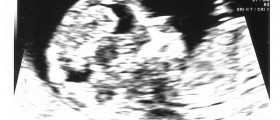
Implantation bleeding is one of the most confusing medical terms. Both women who are trying to conceive and women trying to avoid being pregnant are equally worried when they notice small drops of blood on their panties. This sign mostly terrifies the expecting mother, since they commonly mistake it for the early miscarriage. On the other hand, it is not unusual for women to mistake the early miscarriage for normal implantation bleeding. All of these phenomenons are similar and normal at any stage of a woman’s reproductive life. To distinguish them perfectly a woman may ask for advice from her gynecologist. However, there are some simple signs and symptoms that may help to distinguish between normal menstruation and implantation bleeding.
Implantation bleeding
Not all pregnant women experience implantation bleeding. If the woman’s egg is fertilized and the conception occurs, there is a slight chance a woman will notice implantation bleeding. This phenomenon typically occurs between 8 and 10 days after the fertilization, which is for most women between the 22th and 24th day from the beginning of the menstrual cycle. If a woman's menstrual cycle lasts more than 28 days, she can expect the implantation bleeding 2 to 4 days before the next period. Only about 25 to 30 percent of women will experience the bleeding when the egg attaches to the wall of the uterus. This way the egg forms connections to the placenta from which it will feed for the remaining time of the pregnancy. This process can cause the rupture of the blood capillaries and cause bleeding.
Menstrual spotting
Menstrual spotting sometimes occurs a couple of days before the menstruation. It typically occurs when there is a slight hormonal imbalance in the women’s body. Typically, menstruation begins with a couple of drops and gradually increases to the heavier blood flow. If a woman is sexually active, and she experiences light menstrual spotting instead of the menstruation, she should consult her gynecologist, since there might be a strong possibility that she’s actually pregnant. However, pregnancy testing from blood is possible only 2 days after the implantation bleeding.
How does the implantation bleeding look like?
Implantation bleeding is usually very light. It ranges from pink to dark brown. Typically, dark brown color indicates that fertilization has taken place earlier before. The bleeding most commonly occurs up to five days after the actual implantation. The quantity of blood is very small and if the discharge is brownish, it normally appears in less quantity.

















Your thoughts on this
Loading...